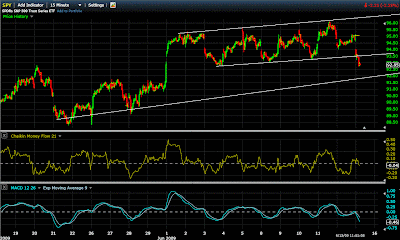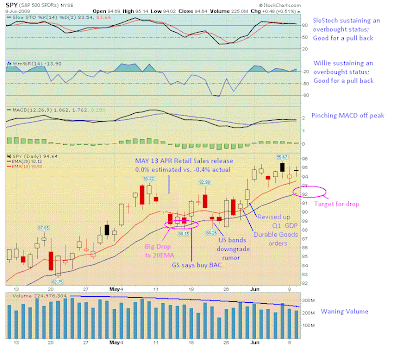Washington, June 23, 2009
Sales of existing homes showed another gain in May, benefiting from favorable affordability conditions and a first-time buyer tax credit, according to the National Association of Realtors®. May’s increase was the first back-to-back monthly gain since September 2005.
Existing-home sales – including single-family, townhomes, condominiums and co-ops – rose 2.4 percent to a seasonally adjusted annual rate1 of 4.77 million units in May from a downwardly revised level of 4.66 million units in April, but remained 3.6 percent below the 4.95 million-unit pace in May 2008.
Lawrence Yun, NAR chief economist, expected an improvement. “Historically low mortgage interest rates clearly drew buyers into the market, and housing remains very affordable even with a recent uptick in rates,” he said. “First-time buyers also are being drawn off the sidelines by the $8,000 tax credit, which is helping to absorb inventory. However, the increase in sales is less than expected because poor appraisals are stalling transactions. Pending home sales indicated much stronger activity, but some contracts are falling through from faulty valuations that keep buyers from getting a loan.”
According to Freddie Mac, the national average commitment rate for a 30-year, conventional, fixed-rate mortgage edged up to 4.86 percent in May from a record low 4.81 percent in April; the rate was 6.04 percent in May 2008. Last week, Freddie Mac reported the 30-year fixed at 5.38 percent; data collection began in 1971.
Total housing inventory at the end of May fell 3.5 percent to 3.80 million existing homes available for sale, which represents a 9.6-month supply2 at the current sales pace, down from a 10.1-month supply in April.
[Fuzz: This is fairly good!]
Yun said the appraisal problem is serious. “Lenders are using appraisers who may not be familiar with a neighborhood, or who compare traditional homes with distressed and discounted sales,” he said. “In the past month, stories of appraisal problems have been snowballing from across the country with many contracts falling through at the last moment. There is danger of a delayed housing market recovery and a further rise in foreclosures if the appraisal problems are not quickly corrected.”
[Fuzz: This is very troubling.]
An NAR practitioner survey in May showed first-time buyers accounted for 29 percent of transactions, and that the number of buyers looking at homes is nearly 10 percentage points higher than a year ago. “This is the time of year when we see large increases in the number of repeat buyers, who are benefitting from sales to entry-level buyers,” Yun said. “Investors appear less active, but are more prevalent in areas with large price corrections.”
NAR President Charles McMillan, a broker with Coldwell Banker Residential Brokerage in Dallas-Fort Worth, said appraisals and the tax credit are key issues. “To maximize the potential for a housing recovery and subsequent economic recovery, we need realistic appraisals that are based on proper comparisons and done by a local specialist,” he said. “In addition, the first-time buyer tax credit should be expanded to all buyers of primary homes regardless of income. Extending the credit into 2010 would allow more time for the market to catch up with underlying demand, in part because many families with children, who normally time their purchase based on school year considerations, do not have enough time to move before the start of school in late August.
“Freeing a pent-up demand in housing will absorb inventory at a faster pace, strengthen communities and stabilize home prices earlier,” McMillan said.
The national median existing-home price3 for all housing types was $173,000 in May, down 16.8 percent from a year earlier. Distressed properties, which declined to 33 percent of all sales in May from 45 percent in April, continue to downwardly distort the median price because they generally sell at a discount relative to traditional homes.
“The decline in the distressed sales share likely results from an increase of repeat buyers in May,” Yun said. “First-time buyers are concentrated in the lower price ranges, which include most of the distressed sales.”
Single-family home sales rose 1.9 percent to a seasonally adjusted annual rate of 4.25 million in May from a pace of 4.17 million in April, but are 3.0 percent below the 4.38 million-unit level in May 2008. The median existing single-family home price was $172,900 in May, down 16.1 percent from a year ago.
Existing condominium and co-op sales increased 6.1 percent to a seasonally adjusted annual rate of 520,000 units in May from 490,000 in April, but are 8.9 percent below the 571,000-unit level in May 2008. The median existing condo price4 was $173,800 in May, down 21.9 percent from a year earlier.
Regionally, existing-home sales in the Northeast rose 3.9 percent to an annual level of 800,000 in May, but are 10.1 percent below a year ago. The median price in the Northeast was $243,600, which is 12.5 percent below May 2008.
Existing-home sales in the Midwest jumped 9.0 percent in May to a pace of 1.09 million but are 4.4 percent below May 2008. The median price in the Midwest was $145,800, which is 10.4 percent lower than a year ago.
In the South, existing-home sales were unchanged at an annual pace of 1.74 million in May but are 8.9 percent below a year ago. The median price in the South was $157,400, down 9.9 percent from May 2008.
Existing-home sales in the West slipped 0.9 percent to an annual rate of 1.14 million in May, but are 11.8 percent higher than May 2008. The median price in the West was $197,700, down 30.6 percent from a year ago.
The National Association of Realtors®, “The Voice for Real Estate,” is America’s largest trade association, representing 1.2 million members involved in all aspects of the residential and commercial real estate industries.
# # #
NOTE: Any references to performance in states or metro areas are from unpublished raw data used to analyze regional trends; please contact your local association of Realtors® for more information.
1The annual rate for a particular month represents what the total number of actual sales for a year would be if the relative pace for that month were maintained for 12 consecutive months. Seasonally adjusted annual rates are used in reporting monthly data to factor out seasonal variations in resale activity. For example, home sales volume is normally higher in the summer than in the winter, primarily because of differences in the weather and family buying patterns. However, seasonal factors cannot compensate for abnormal weather patterns.
Existing-home sales, which include single-family, townhomes, condominiums and co-ops, are based on transaction closings. This differs from the U.S. Census Bureau’s series on new single-family home sales, which are based on contracts or the acceptance of a deposit. Because of these differences, it is not uncommon for each series to move in different directions in the same month. In addition, existing-home sales, which generally account for 85 to 90 percent of total home sales, are based on a much larger sample – more than 40 percent of multiple listing service data each month – and typically are not subject to large prior-month revisions.
Single-family data collection began monthly in 1968, while condo data collection began quarterly in 1981; the series were combined in 1999 when monthly collection of condo data began. Prior to this period, single-family homes accounted for more than nine out of 10 purchases. Historic comparisons for total home sales prior to 1999 are based on monthly single-family sales, combined with the corresponding quarterly sales rate for condos.
2Total inventory and month’s supply data are available back through 1999, while single-family inventory and month’s supply are available back to 1982.
3The only valid comparisons for median prices are with the same period a year earlier due to the seasonality in buying patterns. Month-to-month comparisons do not compensate for seasonal changes, especially for the timing of family buying patterns. Changes in the composition of sales can distort median price data. Year-ago median and mean prices sometimes are revised in an automated process if more data is received than was originally reported.
4Because there is a concentration of condos in high-cost metro areas, the national median condo price generally is higher than the median single-family price. In a given market area, condos typically cost less than single-family homes.
Existing-home sales for June will be released July 23. The next Pending Home Sales Index & Forecast is scheduled for July 1; release times are 10 a.m. EDT.
Information about NAR is available at www.realtor.org. This and other news releases are posted in the News Media section. Statistical data in this release, other tables and surveys also may be found by clicking on Research.
 Link to JUN ISM Report
Link to JUN ISM Report














































